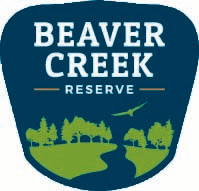By: Abby Mueller
Has there ever been a snowy day where you’ve stopped and looked at the tiny snowflakes that land all around you? Snowflakes beautiful symmetry and complex designs fascinate many people, young and old alike.
But what is it that makes a snowflake symmetrical, and just how do they form? Is it true that no two snowflakes are the same?
To start, a snowflake is actually an ice crystal which forms from an extremely cold water droplet freezing onto a dust or pollen particle in the air. As the ice crystal falls, water molecules in the form of water vapor latch on and cause the crystal to grow. This process is called nucleation. But, depending on the temperature and humidity, different types of snowflakes form.
These types of snowflakes are organized into 7 basic categories of snow crystal types - plates, stellar crystals, columns, needles, spatial dendrites, capped columns, and irregular forms. Around the freezing temperature, hexagonal plates and six sided snowflakes form - the most well recognized and familiar snowflake crystal shapes! In the image below, you can see the different conditions under which other categories form.
| The Snow Crystal Morphology Diagram by Dr. Nakaya |
It is the symmetry of these structures that commonly captures people’s interest. But, snowflakes are not all symmetrical. If you’ve ever caught a snowflake and looked at it, you would notice they can have some irregularities. This is because of the nature of the growth of the snow crystal.
Snow crystals first start from a droplet in the sky which freezes into a tiny particle of ice. This ice starts collecting water vapor on its surface, and so the particle starts to form facets. A facet is a flat surface on a 3D shape, like the flat surface on a prism. For snow crystals, facets form by water molecules striking the crystal surface and sticking. On rough surfaces they will stick well, and on smooth surfaces less well. This is because on rougher surfaces there are more readily available chemical bonds. This causes the rough surfaces to fill in fast, leaving just the smooth faceted surfaces. On snow crystals they form six sided prisms - this is because the shape of the ice crystal mirrors the shape of the molecule forming the crystal. You can have a complete snowflake through just facets (see the plate type with the categories listed in the image above) but some snowflakes can develop branches too.
| A Fernlike Stellar Dendrite Snow Crystal |
| As the snowflake falls through the sky, it goes through different atmospheric conditions, causing it to alternate between faceting and branching. |
No two snowflakes are perfectly identical either - this is because of the conditions of the outside world. In a lab environment where temperature and humidity are controlled, two nearly identical snowflakes can be created. But in the outdoors where these factors often change, each snowflake will have slightly different conditions as it falls. This leads to different growth and different snow crystal structures!
Keep an eye out for the next time it snows (hopefully soon!) and take a close up look at some snow crystal structures yourself. See if you can guess the temperature and humidity by the structure of the crystal, but most importantly, simply enjoy the beauty of the snowflakes!
Sources:
Images
http://www.snowcrystals.com/
Text
http://www.snowcrystals.com/
https://scijinks.gov/snowflakes/
http://www.its.caltech.edu/~atomic/snowcrystals/faceting/faceting.htm

Loved this article. Thank you so much for all the information.
ReplyDelete